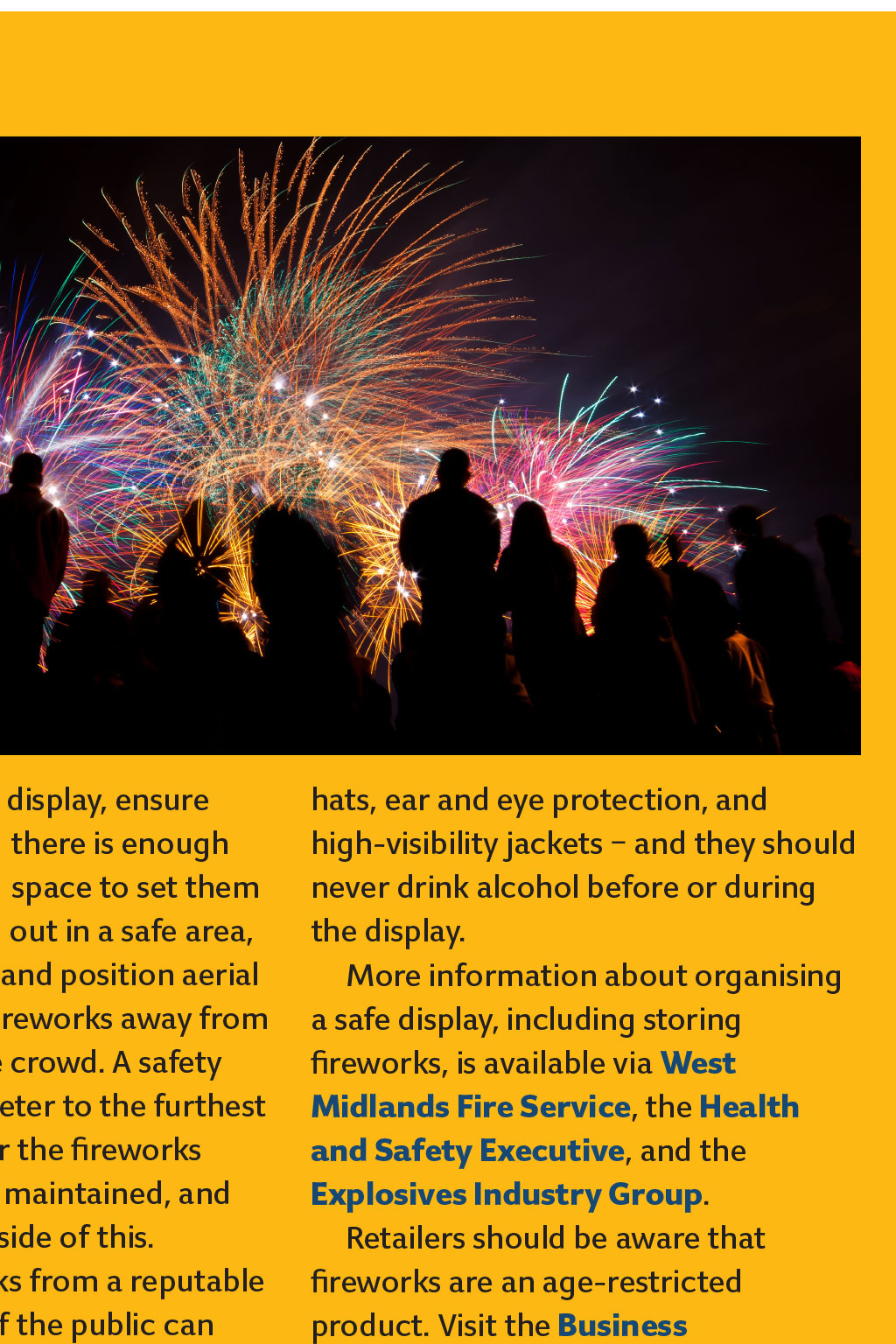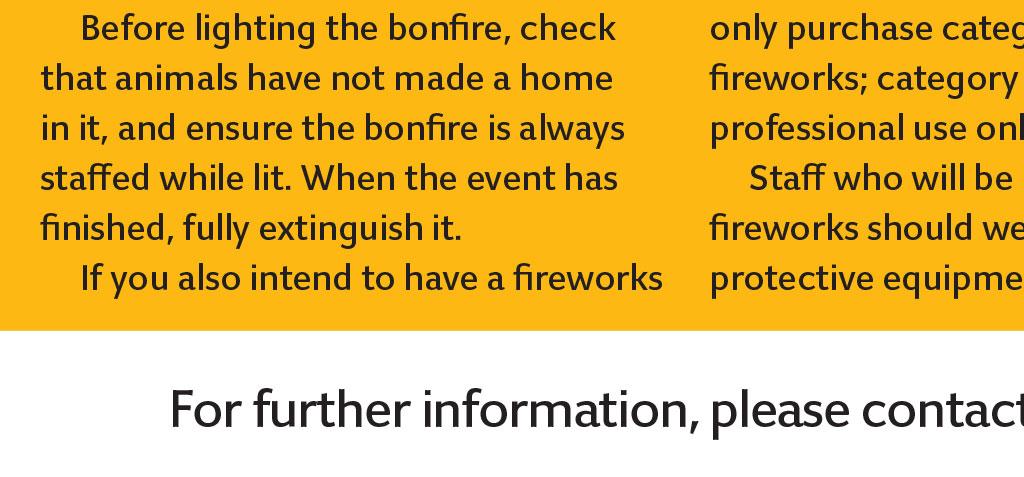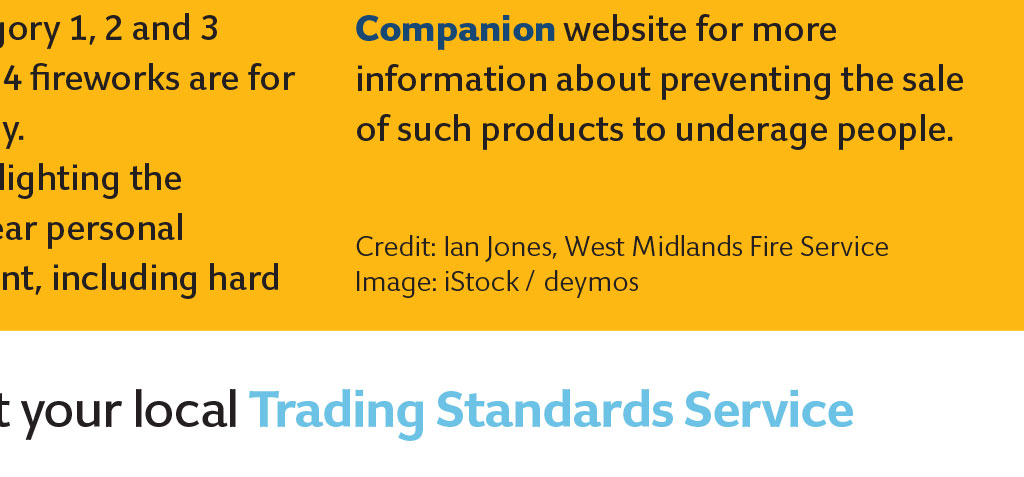
















AUTUMN 2022 HALLOWEEN/BONFIRE NIGHT SAFETY Retailers must ensure the Halloween outfits they sell are safe for children to wear HOW TO AVOID A COSTUME DRAMA Incidents of children being severely injured while wearing fancy dress costumes that readily caught fire and then burned violently have made the news in recent years. To ensure your products are safe, you must check that they comply with toy-safety legislation; look for the CE or UKCA mark on an item. Fancy dress costumes for children under 14 years are considered to be toys and fall within the scope of the Toys (Safety) Regulations 2011. To comply they: n Must not burn if directly exposed to a flame or spark n Must not be readily flammable that is, the flame should go out as soon as the ignition source is removed. If the costumes do ignite, they must burn slowly and present low rate of spread, or be treated so as to delay the combustion process. To demonstrate compliance with the regulations, manufacturers of childrens fancy dress costumes can apply BS EN 71 Part 2, which covers the flammability requirements for toys. Fancy dress items may also need to comply with childrens nightwear legislation. Credit: Sarah Noonan, Trading Standards officer Image: iStock / kajakiki Retailers selling childrens toy dress-up and Halloween costumes should ensure their products are of a high quality. The advice is to comply with the new voluntary codes of practice supported by the Royal Society for the Prevention of Accidents and the British Retail Consortium which contain leaflets that you can use to offer safety advice to your customers. Celebrate safely As we head into autumn, and darker, chillier nights, your business may be thinking of organising an event featuring fireworks and a bonfire. Such celebrations can be a lot of fun, provided a few simple steps are followed. First, assess your outside space to ensure there is enough room to accommodate a bonfire away from the public. Generally, the outer perimeter should be three times as wide as the bonfire is high. In the UK, The bonfire should be fireworks must not sited well away from be set off between 11pm buildings, fences, trees display, ensure and 7am, except on: Bonfire and anything that there is enough Night (5 November only), could catch fire, and space to set them when the cut off time is be built carefully, to out in a safe area, midnight; and New Years ensure it wont collapse and position aerial Eve, Diwali and Chinese to one side when lit. fireworks away from New Year (all 1am) Dont burn foam-filled the crowd. A safety furniture, plastics, aerosols, perimeter to the furthest bottles or paints, and never use distance for the fireworks flammable liquids such as paraffin or being used must be maintained, and petrol to light the fire. Keep a source spectators kept outside of this. of water, such as a hose and/or buckets, Only buy fireworks from a reputable nearby in case of an emergency. retailer. Members of the public can Before lighting the bonfire, check only purchase category 1, 2 and 3 that animals have not made a home fireworks; category 4 fireworks are for in it, and ensure the bonfire is always professional use only. staffed while lit. When the event has Staff who will be lighting the finished, fully extinguish it. fireworks should wear personal If you also intend to have a fireworks protective equipment, including hard hats, ear and eye protection, and high-visibility jackets and they should never drink alcohol before or during the display. More information about organising a safe display, including storing fireworks, is available via West Midlands Fire Service, the Health and Safety Executive, and the Explosives Industry Group. Retailers should be aware that fireworks are an age-restricted product. Visit the Business Companion website for more information about preventing the sale of such products to underage people. Credit: Ian Jones, West Midlands Fire Service Image: iStock / deymos For further information, please contact your local Trading Standards Service